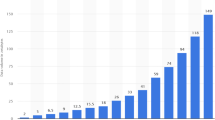Abstract
The new era of computation has given new directions for advancement and sophistication. The meaning of computation has made a paradigm shift from device and location orientation to the distributed level. Storage has become cheaper. Multiple technologies and their interconnections and their wide range of services have made this planet to be more sophisticated and more flexible in computing. Service orientation based computing of cloud has achieved a huge success. Data centers has already existing even before the emergence of cloud technology, but cloud makes these data centers to communicate, between these data centers and allocate the resources properly and functioning appropriately using a network and to used these resources and maintain them properly. Most of the cloud services providers have their own Data center. ‘Azure’ online cloud platform provided Microsoft provides cloud services and resources to the end-user. Its pricing mechanism is economical and flexible. One can learn Azure very easily and Micro soft company provides Azure certifications for the one who qualifies with international standards.

Similar content being viewed by others
References
Mangla N, Singh J, Singh M. Improving performance of web applications using cloud resources. In: Proceedings of 3rd international conference on reliability, infocom technologies and optimization, Noida, pp. 1–6, 2014.
Gundu SR, Panem CA, Thimmapuram A. Real-time cloud-based load balance algorithms and an analysis. SN Comput Sci. 2020;1:187.
Subramanian V, Wang L, Lee E, Chen P. Rapid processing of synthetic seismograms using windows azure cloud. In: 2010 IEEE second international conference on cloud computing technology and science, Indianapolis, IN, pp. 193–200, 2010.
Gundu SR, Panem CA, Timmapuram A. Robotic technology-based cloud computing for improved services. SN Comput Sci. 2020;1:190. https://doi.org/10.1007/s42979-020-00203-1.
Bihis M, Roychowdhury S. A generalized flow for multi-class and binary classification tasks: an Azure ML approach. In: 2015 IEEE international conference on big data (big data), Santa Clara, CA, pp. 1728–1737, 2015.
Agarwal D, Karamati S, Puri S, Prasad SK. Towards an MPI-Like framework for the azure cloud platform. In: 2014 14th IEEE/ACM international symposium on cluster, cloud and grid computing, Chicago, IL, pp. 176–185, 2014.
Wahaballa A, Wahballa O, Abdellatief M, Xiong H, Qin Z. Toward unified DevOps model. In: 2015 6th IEEE international conference on software engineering and service science (ICSESS), Beijing, pp. 211–214, 2015.
Agarwal D, Prasad SK. AzureBench: benchmarking the storage services of the azure cloud platform. In: 2012 IEEE 26th international parallel and distributed processing symposium workshops and PhD forum, Shanghai, pp. 1048–1057, 2012.
Pandey R, Srivastava N, Verma K. Data visualization through R and Azure for scaling machine training sets. In: 2017 7th international conference on communication systems and network technologies (CSNT), Nagpur, pp. 345–349, 2017.
von Söhsten D, Murilo S. Multiple face recognition in real-time using cloud computing, Emgu CV and Windows Azure. In: 2013 13th international conference on intellient sys-tems design and applications, Bangi, pp. 137–140,2013.
Pliuhin V, Pan M, Yesina V, Sukhonos M. Using azure maching learning cloud technology for electric machines optimization. In: 2018 international scientific-practical conference problems of infocommunications. Science and technology (PIC S&T), Kharkiv, Ukraine, pp. 55–58, 2018.
Verma A, Malla D, Choudhary AK, Arora V. A detailed study of azure platform and its cognitive services. In: 2019 international conference on machine learning, big data, cloud and parallel computing (COMITCon), Faridabad, India, pp. 129–134, 2019 and Challenges in computational models (ICRTCCM), Tindivanam, 2017, pp. 7–12. https://doi.org/10.1109/ICRTCCM.2017.49.
Acknowledgements
I sincerely thank and express deep sense of gratitude to my research supervisor Prof. T. Anuradha (Professor-in-Computer Science and Ex-Registrar and Vice Chancelor (I/C) Dravidian University) who has guided me for exploring more to in the qualitative content about the cloud computing environment. I sincerely express my sincere thanks for her inspiration and mentorship for this paper.
Funding
This study is not funded by any organization.
Author information
Authors and Affiliations
Corresponding author
Ethics declarations
Conflict of Interest
I do not have any conflict of interest.
Additional information
Publisher's Note
Springer Nature remains neutral with regard to jurisdictional claims in published maps and institutional affiliations.
This article is part of the topical collection “Advances in Computational Approaches for Artificial Intelligence, Image Processing, IoT and Cloud Applications” guest edited by Bhanu Prakash K N and M. Shivakumar.
Rights and permissions
About this article
Cite this article
Gundu, S.R., Panem, C.A. & Thimmapuram, A. The Dynamic Computational Model and the New Era of Cloud Computation Using Microsoft Azure. SN COMPUT. SCI. 1, 264 (2020). https://doi.org/10.1007/s42979-020-00276-y
Received:
Accepted:
Published:
DOI: https://doi.org/10.1007/s42979-020-00276-y




